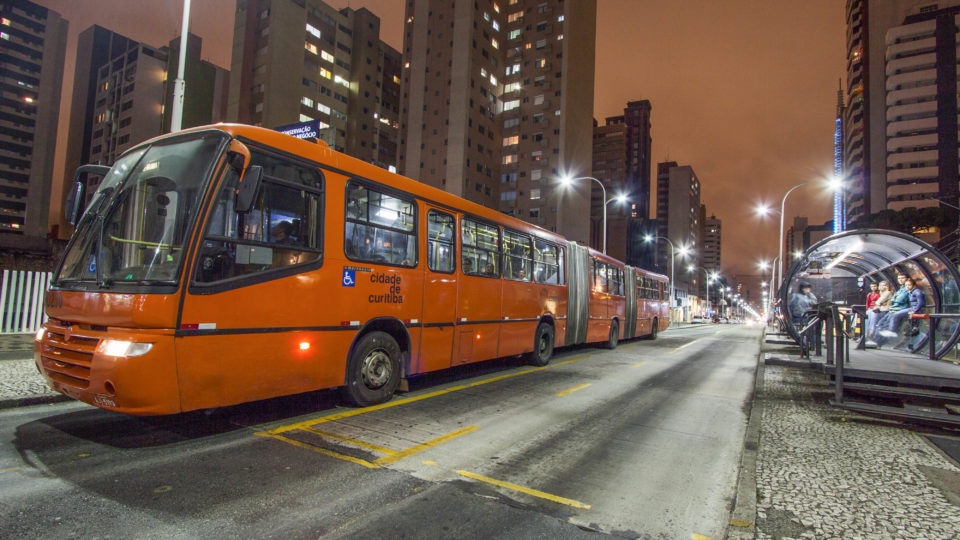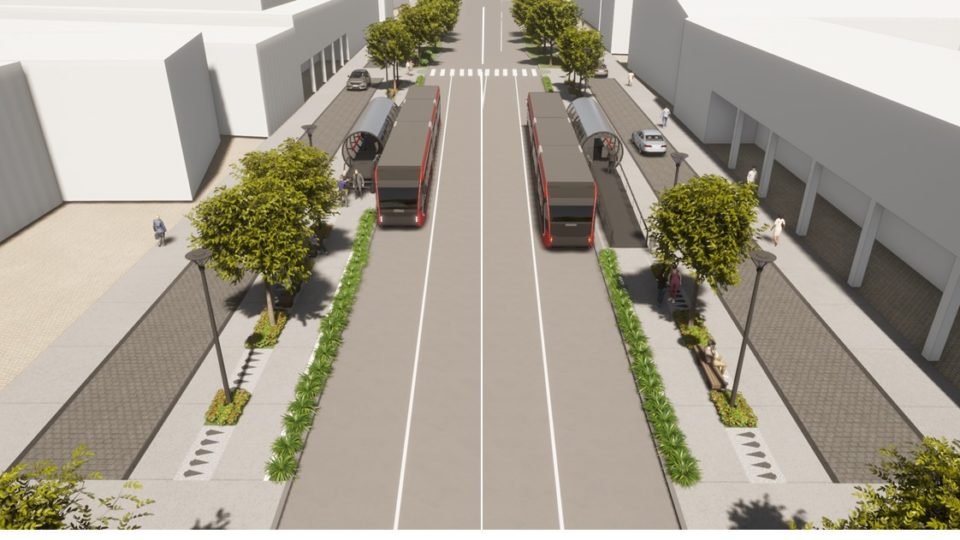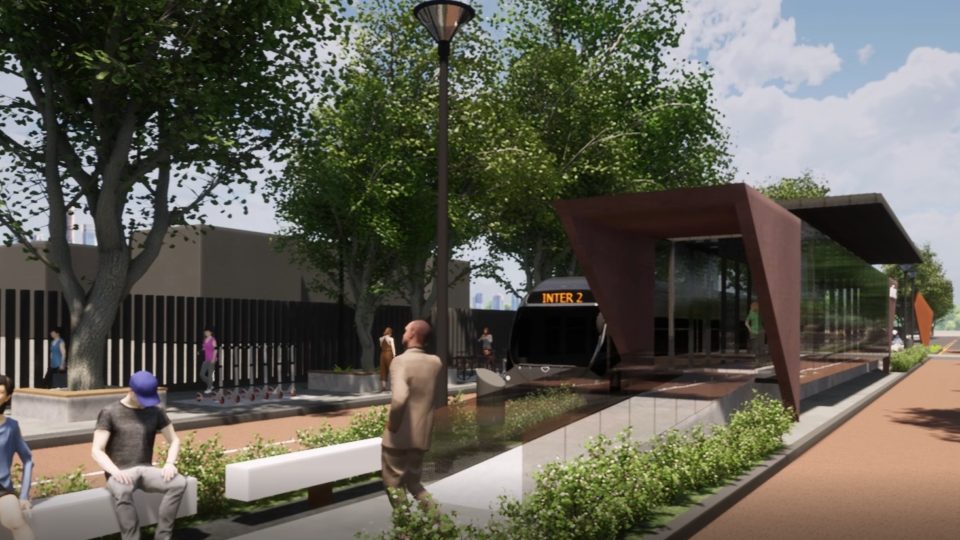The Brazilian city that was a model for public transportation in more than 170 countries reaches a crucial moment and outlines initiatives on modernizing urban mobility according to users’ needs and available technologies.
Curitiba, the capital of Paraná, showed the world the BRT (Bus Rapid Transit), a system in which buses have exclusive lanes and optimized integration to give better flow to transport and save passenger time.
But after almost 50 years since the project began to be implemented, the city is challenged to rethink mobility and make the collective attractive to the user again.

The data clearly show that, in recent years, Curitiba passenger has left the bus on the side.
From 1.9 million people who used public transportation in 2008, a large part migrated to another alternative, mainly the car – and, a decade later, buses are now responsible for transporting 1.38 million passengers.
The numbers had already been falling and suffered a further significant reduction with the Covid-19 pandemic.
And, even after the health crisis, Curitiba’s public transportation has not recovered to pre-pandemic rates.
In parallel, the number of cars in circulation grows and keeps Curitiba with an average of cars per inhabitant that is almost twice as high as in Brazil.
In February 2023, the city registered 1.015 million cars for 1.873 million inhabitants.
That is: for every two people in Curitiba, one has a car.
In Brazil, the average was one car for every 3.5 people in 2022.
The data are from the Paraná Traffic Department (Detran-PR) and the Brazilian Institute of Geography and Statistics (IBGE).
Added to the challenge of promoting the use of public transportation is the goal of maintaining tradition as an example of a pro-environmental capital.
Member of the C40, a coalition of major cities in the world committed to developing actions to reduce carbon emissions, Curitiba has one more target to meet: zero emissions by 2050, a short time to evolve in issues that have been regressing for decades.
In the race against the clock two years ago, the capital of the state of Paraná focused on a climate action plan with 20 strategic actions, three of which are focused on mobility.
Decarbonizing public transportation, developing active mobility, and creating planning and operational alternatives for low-carbon mobility.
The studies carried out by the public administration showed that most of the emissions come from transportation in general, about 67%.
“Public transportation is not the villain in this universe since it accounts for 5% to 6% of emissions. It is the one that emits the least and transports the most”, assesses Ana Cristina Jayme, Investment advisor of the Institute for Research and Urban Planning of Curitiba (Ippuc), the municipal autarchy responsible for planning projects and urban management.
Analyzing the development scenarios, if nothing is done regarding waste management, energy use, and transportation, for example, the city will double and not zero carbon emissions in 27 years.
Concerning mobility in Curitiba, the challenge for an ideal scenario is to reduce individual vehicles’ participation from the current 46% to 7% and to reach 85% of all displacements occurring through shared and collective active mobility.
“And that includes everything that moves on two wheels and two legs, besides buses and shared cars,” explains Ana Cristina.

ACTIONS TO PUT THE GOAL INTO PRACTICE
The need to integrate the various ways of getting around and to use the database to optimize the use of each means of transportation is the answer that mobility experts give to the challenges of overcoming distances and facing hours of traffic in big cities.
Curitiba shares this assessment.
Extending bike lanes, shared streets with priority for pedestrians (such as Avenida República Argentina), and bus line projects designed to “talk” to using bicycles, scooters, and shared cars are the solution, says the Ippuc architect.
Besides, of course, the use of technology as an aggregator of information and services that the user needs to find the best way to move around.
As for public transportation, the two big bets are the construction of the East-West BRT lines and the new Inter 2.
The investments are US$93.7 million and US$153.4 million, financed by the New Development Bank and the Inter-American Development Bank (IDB).
Together, the lines account for 40% of the passenger demand of Curitiba’s structuring corridors.
CURITIBA’S EAST-WEST BRT PROJECT

With the adequacy of gutters along 20 kilometers, renovation of stations, and construction of terminals, the East-West BRT promises to connect Pinhais, in the metropolitan region, to the neighborhood of Cidade Industrial de Curitiba 23 minutes faster than today.
The Inter 2 works also intend to give more capacity and speed to the line.
They are divided into seven lots, totaling 38 kilometers, and include widening tracks and intermodal connections at stations and integrated terminals.
“The Inter 2 and East-West BRT projects are the gateways to all these new approaches to mobility in Curitiba.”
“They will have the concept of electric buses, which besides reducing emissions, bring comfort, impacting people’s health and the economy.”
“Today, only 4% of our fleet uses low-emission fuels.”
“By 2050 we want 100% and at least 33% by 2030,” says Ana Jayme, who participated in the financing processes of the projects with international organizations.

INTERMODALITY IN THE STATIONS
For the stations, a new concept will be tested: offer a mobility hub in Curitiba, with space for bicycles, scooters, and shared cars, in addition to solar energy supply.
For passengers to get to the bus, the promise is to offer good sidewalks (a recurring complaint from many Curitibans) and shared paths that encourage them to walk shorter distances, the construction of bike lanes and shared bike services, as well as shared cars to overcome longer distances.
According to the Ippuc architect, Curitiba’s cycling network will almost double by 2025, from the current 261 to 408 kilometers.
For shared bicycles, the city hall opened an invitation to accredit service providers in September last year, and the estimate is that at the beginning of the second semester, the stations will be implemented and the bicycles available for rental, according to the Superintendence of Traffic (Setran).
As for shared cars, still in 2019, the city hall was discussing a partnership project with Renault to make electric cars available, with exclusive parking spaces and recharging points.
The goal, at the time, was to have 550 cars running by 2025.
But, with the coming of the pandemic, the project did not evolve as planned and was suspended.
Currently, Mobilize, a Renault group brand focused on new mobility, has been expanding the carsharing service, but within the scope of partnerships with companies, with rental of electric fleets for use among employees, as was recently done with the Companhia Paranaense de Energia (Copel).
The perspective is to extend the operation to the public in general – but without a concrete deadline for this.
“It is not open to the public yet, we are controlling this for quality reasons, but I think that slowly we will implement this culture, and very soon we will be open to the population,” says the head of Mobilize Beyond Automotive in Brazil, Ricardo Mendes.
DATA PLATFORM TO INTEGRATE SERVICES IN FAVOR OF MOBILITY IN CURITIBA
The projects alone do not meet the need for integration so that public and shared transportation can flourish.
A data vertical is needed to do the job.
Curitiba intends to be the first city in Latin America to implement an open platform for mobility as a service (MaaS), which will show the user how to plan the trip based on the best cost-benefit/time of the moment.
“It will have a technological base where it will be possible to connect various mobility services, public and private, including payments, delivered to the user through an application interface,” explains Ana Jayme.
The application will indicate the fastest and cheapest transportation or a combination.
And it will allow the functionalities of the several apps used on cell phones, such as those for private transportation, buses, and the future shared cars and bicycles, to be operated in just one.
“We are in the phase of hiring the pilot project of the data platform via the Legal Framework for Startups, using the modality of public hiring of an innovative solution, which is, instead of hiring the product, the solution to the problem,” she says, citing Complementary Law 182 of June 2021, sanctioned by former president Jair Bolsonaro (PL).
The idea is to hire a market solution and, from the pilot project, to increase the platform according to Curitiba’s specific mobility needs. The expectation is to launch an international tender for hiring still this year, with a presentation to the public in 2024.
STATUS OF THE PUBLIC TRANSPORTATION WORKS
The works of the BRT East-West and Inter 2 have executive projects ready and a budget in cash for construction.
The East-West axis is in the binary construction phase between the Tarumã and Cajuru neighborhoods, and the public notice for contracting the execution of the bus corridor is about to be published, according to Ippuc.
The Inter 2 project had two bidding attempts frustrated, and the city hall has just launched a new bid notice.
Divided into lots, the work will be done in stages. The contracts foresee five years for the execution of the lines.
Curitiba’s mobility projects include the LRV (light rail vehicle, a kind of intermediary between the bus and the subway) connecting the Civic Center to the Afonso Pena.
In its early stages, the implementation involves a partnership with the Government of Paraná and the municipality of São José dos Pinhais.
Currently, the agencies are working to hire the National Bank for Social Development (BNDES) to structure the project.
The subway, propagandized by the municipal, state, and federal governments, especially amid the negotiations for the 2014 Soccer World Cup, is not a modal that should integrate the mobility projects in Curitiba.
After work began in 2009 for environmental impact studies, the project has stalled, with no prospects of resumption.
According to Ippuc, the structuring to enable a public-private partnership (PPP) was made without success.
And because of the decreasing demand for public transportation passengers, the subway would not even be justified.
The next step with a date to come is the inclusion of articulated electric buses in the fleet in the testing phase.
“We have a public call for a demonstration to test the existing lines. We have eight proposals, three articulated and five standards,” says the Ippuc advisor.
The tests begin between April and May.
With information from Gazeta do Povo

